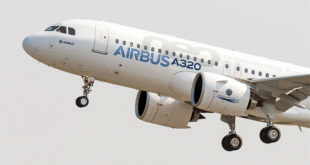Boeing 787-8 Dreamliner Makes Emergency Landing in Washington On July 25, 2025,United Airlines Flight UA108, a an route to Munich, was forced to make an emergency landing shortly after departing from Washington Dulles Airport.
Just minutes after takeoff, the aircraft suffered a failure in its left engine at approximately 5,000 feet altitude.
The pilot immediately issued a Mayday call, indicating a serious in-flight emergency and requesting a return to the airport.
In-Flight Fuel Dump and Holding Pattern
To safely prepare for landing, the aircraft entered a holding pattern northwest of Washington.
During this time, the crew initiated a fuel dump — a necessary step to reduce the plane’s weight to a safe landing level.
This procedure was conducted under standard aviation safety protocols and ensured that the landing could be executed with reduced risk.
Smooth Emergency Landing and Ground Support
After over two hours of circling and dumping fuel, the Dreamliner safely returned to Dulles Airport using an Instrument Landing System approach.
The aircraft landed without incident, and no injuries were reported among the passengers or crew. However, due to the engine failure, the aircraft was unable to taxi and was towed from the runway by ground vehicles.
Investigation and Safety Review
Following the emergency landing, the aircraft was grounded at Dulles as aviation authorities and United Airlines began a formal investigation.
The incident has raised fresh concerns about the reliability of Boeing 787 engines and overall aircraft maintenance.
Investigators are now reviewing technical data, flight records, and crew actions to determine the exact cause of the engine failure.
Conclusion
The emergency landing of the Boeing 787‑8 Dreamliner in Washington highlights both the risks involved in air travel and the effectiveness of modern aviation safety procedures. The professionalism of the flight crew, along with proper coordination from air traffic control and emergency services, helped avert a potential disaster. As the investigation unfolds, the incident serves as a strong reminder of the importance of rigorous maintenance, crew training, and real-time decision-making in ensuring passenger safety.




